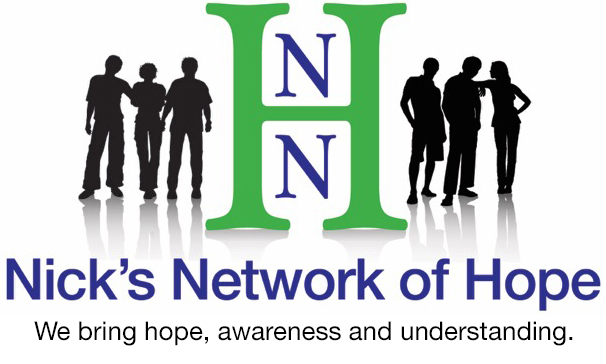Eating disorders usually appear during the teen years and early adulthood, although they can appear at any stage in life. They include serious emotional and physical problems that can have life-threatening consequences if left untreated.
Types of Eating Disorders (all are links) 1 2
- Anorexia Nervosa – serious, potentially life-threatening eating disorder characterized by self-starvation, excessive weight loss, and often distorted body image. People with anorexia nervosa see themselves as overweight, even when they are dangerously underweight and restrict calorie intake and types of feed eaten. Some sufferers exercise compulsively, purge by vomiting and laxatives, and/or binge eat. Approx. 90-95% of anorexia nervosa sufferers are girls and women. Between 0.9-2% of American women and .1-.3% of males will develop anorexia nervosa. It is the third most common chronic disease among young people. In women, suicide is more common in those with anorexia than with any other mental disorder.
- Bulimia Nervosa – serious, potentially life-threatening eating disorder characterized by a cycle of binge-eating with lack of control followed by compensating behaviors such as self-induced vomiting, excessive use of laxatives or diuretics, fasting, excessive exercise, or a combination of these behaviors to prevent weight gain. Between 1.1%-4.6% of adolescent and young women and 0.1%-0.5% of young men are affected by it.
- Binge Eating Disorder (BED) – the most common eating disorder in the U.S. characterized by recurrent episodes of eating in large quantities of food (often quickly to the point of discomfort); feeling of loss of control during the binge; experiencing shame, distress or guilt afterward; and NOT regularly using unhealthy compensatory measures (e.g., self-induced vomiting, misuse of laxatives, diuretics, or other medications, excessive exercise or fasting) to counter the binge eating. It is a severe, life-threatening, and treatable eating disorder. Between 0.2% and 3.5% of females and 0.9% and 2.0% of males will develop it. It often begins in late teens and early 20s but can occur in younger children and older adults. Approx. 40% of those with BED are male.
- Other Specified Feeding or Eating Disorder (OSFED) – feeding or eating disorder that causes significant distress or impairment, but does not meet the criteria for another feeding or eating disorder.
- Avoidant Restrictive Food Intake Disorder (ARFID) – new diagnosis in the DSM5 (previously called “Selective Eating Disorder”). ARFID is similar to anorexia in that both disorders involve limitations in the amount and types of food consumed, but unlike anorexia, ARFID does not involve any distress about body shape or size.
- Unspecified Feeding or Eating Disorder (UFED) -when symptoms characteristic of a feeding and eating disorder that causes clinically significant distress or impairment in social, occupational or other vital areas of functions predominate but do not meet the full criteria for any of the diagnostic class.
- PICA– Eating Disorder that involves eating items that are not considered food, or having nutritional value, such as hair, paint chips, and dirt. Diagnosis is made from the clinical history of a patient.
- Rumination Disorder– Repeated regurgitation of food for at least one month. Regurgitation may be re-chewed, re-swallowed, or spit out. The repeated regurgitation is not due to a medical condition. The behavior does not occur exclusively in the course of anorexia nervosa, bulimia nervosa, BED, or avoidant/restrictive food intake disorder. If occurring in the presence of another mental disorder, it is severe enough to warrant independent clinical attention.
- Orthorexia Disorder– Orthorexia is not a formal diagnosis in the Diagnostic Statistical Manual but was coined in 1998. It involves a fixation on so-called “healthy eating” to the point of being unhealthy, causing actual damage to a person’s well being. Some studies show a correlation between orthorexia and obsessive-compulsive disorder.

To learn more information about each disorder, including diagnoses, warning signs and symptoms, diagnostic criteria, and links to Information by Disorder, Risk Factors, Health Consequences, Co-Occurring Disorders, and Special Issues, Busting the Myths about Eating Disorders, and Stages of Recovery, click on the Learn More button below. 3
Learn More
The above link leads to additional information provided by the National Eating Disorder Association for the following topics:
- People of Color
- LGBTQ+ Populations
- Men & Boys,
- Size, Diversity & Health at Every Size
- Athletes
- Mid Life & Beyond
- Jewish Community.4
Body Image
Negative or Distorted Body Image is how people see themselves. Distorted body image, a/k/a negative body image is the way a person sees themselves, which is not based in reality. Women are more likely than men to suffer from this disorder, although men do too. Your perception of your body starts forming when you are a child with regards to beauty, health, attractiveness, acceptability, etc. Your perception is influenced by others, like your peers, teachers, parents, coaches, for example, as they give you feedback throughout your life. Society, in general, can also influence self-perception, such as when the media dictates to young women through print ads that being skinny is attractive. Personality traits, like perfectionism and self-criticism, also negatively impact body image perception.
Weight & Body Image Disorders: Causes, Symptoms & Signs
Click here for a description of weight and body image disorders, their causes, and signs & symptoms sourced by Eating Disorder Hope.5 There you will also find information regarding the relationship between weight and body image, the relationship between an eating disorder and body image, treatment for negative body image, and weight and body image articles.
Click here for more information on Body Image from the National Eating Disorder Association, including links to Body Image and Eating Disorders, Ten Steps to Positive Body Image, Developing & Modeling Positive Image, Every Body is Different, and Media & Eating Disorders.
More Info on Orthorexia, Excessive Exercise & Nutrition
Exercise and nutrition are health concerns, but when taken to an extreme, are red flags pointing towards unhealthy behaviors. Orthorexia is a common eating disorder characterized by a fixation or desire to eat only “healthy” foods to the exclusion of entire food groups. Click here for further information from Eating Disorder of Hope on Excessive Exercise, Orthorexia, Signs, and Symptoms of Excessive Exercise, Signs, and Symptoms of Orthorexia, Treatment for Exercise Addiction, Treatment for Orthorexia, Dieting and Nutrition, and Articles on Orthorexia, Excessive Exercise, and Nutrition.6

Statistics
For statistics sourced by The National Association of Anorexia Nervosa and Associated Disorders (ANAD)7on eating disorders click on the “Learn Stats” button below:
Learn Stats
Click on the “More Statistics & Research” button below to get links to the following information all sourced by the National Eating Disorder Association (www.nationaleatingdisorders.org/statistics-research-eating-disorders):
- Anorexia
- ARFID
- Athletes
- Binge Eating Disorder
- Bulimia
- Bullying/Weight Shaming
- Co-Occurring Disorders
- Compulsive Exercise
- Diabulimia
- Dieting/”Clean Eating”
- Insurance/ Legal Issues
- Jewish Community
- Marginalized Voices
- Media
- Men
- Mortality
- PICA
- Substance Abuse
- Trauma/PTSD
More Statistics & Research
Sources:
- National Eating Disorder Association (NEDA). Retrieved from https://www.nationaleatingdisorders.org/what-are-eating-disorders ↩
- The National Institute of Mental Health. Retrieved from https://www.nimh.nih.gov/health/topics/eating-disorders/index.shtml ↩
- National Eating Disorder Association (NEDA). Retrieved from https://www.nationaleatingdisorders.org/what-are-eating-disorders ↩
- National Eating Disorder Association (NEDA). Retrieved from https://www.nationaleatingdisorders.org/identity-eating-disorders ↩
- Eating Disorder Hope. Retrieved from https://www.eatingdisorderhope.com/information/body-image ↩
- Eating Disorder Hope. Retrieved from https://wwweatingdisorderhope.com/information/orthorexia-excessive-exercise/ ↩
- The National Association of Anorexia Nervosa and Associated Disorders(ANAD). Retrieved from https://anad.org/get-informed/about-eating-disorders/eating-disorders-statistics/ ↩
